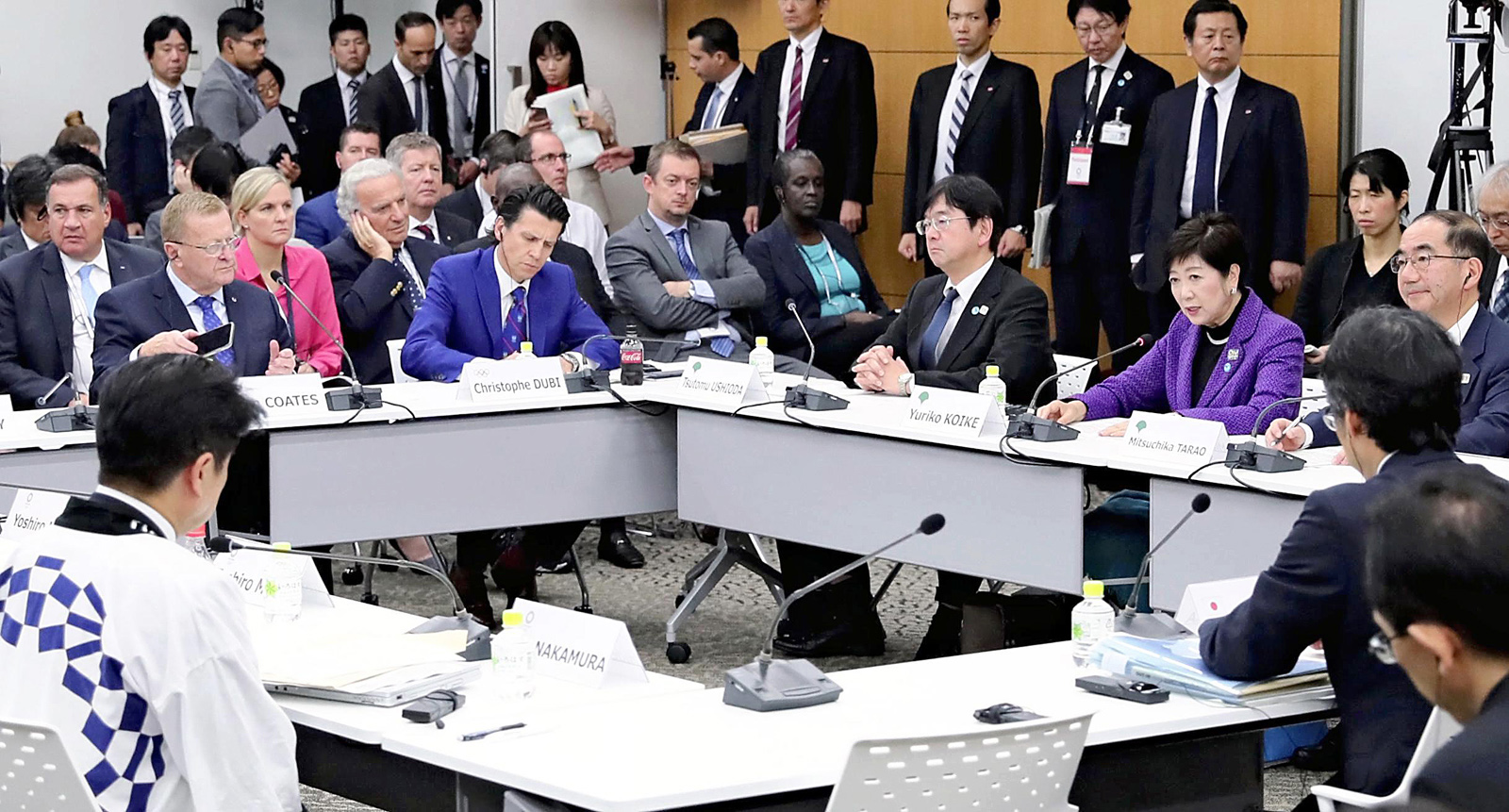Issues remain even after Sapporo marathon decided in Japan
TOKYO — Now that the International Olympic Committee’s plan to relocate the 2020 Tokyo Olympics marathon and race walk events to Sapporo has been finalized, a mountain of issues has emerged, such as how to set the courses and cover the costs.
With less than nine months to go before the Games open, preparations must be made urgently.
The IOC’s plan, proposed out of the blue only half a month ago, was finally set on Friday at a meeting of top officials from the IOC and the Tokyo metropolitan government.
Battle over concessions
“This is a losing battle,” a senior metropolitan government official said bitterly, immediately after the IOC announced its proposal to hold the events in Sapporo on Oct. 16.
The host city contract that the metropolitan government concluded with the IOC and others stipulated that the IOC has the final say on Olympic matters. The official’s comment reflected this.
The metropolitan government was informed of the plan only the day before the IOC announced it. However, Yoshiro Mori, president of the Tokyo Organizing Committee of the Olympic and Paralympic Games, told Seiko Hashimoto, minister for the Games, and others before telling Tokyo government officials.
Koike, left out of the loop, was furious and waged a do-or-die battle of resistance.
Appearing on a number of TV programs, Koike appealed to the public over holding the events in Tokyo, saying, “Many Tokyo residents are not convinced [of the IOC’s proposal].”
At an IOC coordination committee meeting that began Wednesday, the metropolitan government demanded the IOC respond to seven conditions set by Tokyo, including the following:
1. Refusal to bear any additional costs, which are expected to total as much as ¥30 billion;
2. Compensation for the costs already incurred by Tokyo to take measures against the heat;
3. Elaborating on the matter to Tokyo residents.
In response, John Coates, chairman of the IOC’s Coordination Commission for the 2020 Tokyo Games, said that the IOC has been listening to Tokyo’s requests, citing the metropolitan government changing venues one after another for reasons such as cutting construction costs.
Coates then apparently urged the Tokyo side to accept the IOC’s Sapporo proposal as a decision.
Negotiations continued until just before Friday’s top-level meeting, and the talks were concluded with an agreement on four conditions, including one that states no additional costs will be borne by the metropolitan government.
The conditions also included a plan for the metropolitan government and the IOC to jointly hold a marathon event after the Olympics, out of consideration for the host city and its people.
A senior metropolitan government official said, “We managed to wrest every concession we could from the powerful IOC.”
Who will bear costs?
Nevertheless, it has not yet been decided who will shoulder the costs of hosting the events in Sapporo and the costs Tokyo has already spent on the marathon and race walk courses.
After holding talks with Koike on Oct. 25, Coates told reporters that there is a reserve fund to be used for any contingency.
The fund, estimated to be between ¥100 billion and ¥300 billion, is for the organizing committee to prepare for emergencies, such as natural disasters. However, who will pay into the fund remains unclear.
Another problem is the condition decided on at Friday’s meeting, which states the metropolitan government will not be responsible for expenses related to items for marathon and race walk events that cannot be repurposed.
The metropolitan government expects to be compensated for the several billion yen it has paid for heat-insulating pavements that curb rising temperatures on road surfaces. However, details are yet to be concluded.
Impact of winter
The organizing committee and others are in a rush to determine the marathon courses in Sapporo in order to get an idea of the costs for the events.
According to sources, an official of the organizing committee visited Sapporo in late October and held talks with staff related to track-and-field. Now, a course starting from and finishing in Odori Park is most likely because it will cost a lot of money to renovate Sapporo Dome, the venue initially proposed by the IOC as the starting and finishing point.
However, Odori Park is a venue for an annual open-air beer festival, which attracted about 1.16 million visitors this summer. Thus, if the festival is canceled due to the Olympic events, it would hit the local economy hard.
In Sapporo, in an average year, there tends to be snow on the ground from late November to April. A source close to the Tokyo Games said, “The course needs to be determined soon, but there are many challenges and it is not easy.”
Coates: Odori Park ‘agreed’
On Saturday, Coates told The Yomiuri Shimbun that it has already been informally agreed to have the start and finish lines of the Games’ marathons and race walks in Odori Park instead of Sapporo Dome, which the IOC originally proposed.
Coates pointed out that it would possibly cost a huge amount to renovate Sapporo Dome and the streets around the Dome, adding that it would be realistic to have the park as both the start and the goal because it is used for the Hokkaido Marathon, which is approved by the Japan Association of Athletics Federations.
